Combat Mission Fortress Italy: Gustav Line – PC Game Review
Developed and Published by Battlefront Inc.
Author: Boggit
Last year I reviewed the core game and first instalment of CMFI . That review was positive in most respects, and particularly for the innovations to the CMx2 engine. I was however, mainly critical for the omission of any Commonwealth troops for a Sicilian campaign, and for the scarcity of “historical” scenarios with regard to the history of US forces in action. So what does Fortress Italy Gustav Line add to the core game?
Well the short answer is that Fortress Italy Gustav Line is a huge improvement to the core game. It adds a considerable amount of new nationalities, combat formations, equipment, campaigns, scenarios and quick battle maps. It also adds some new features previously unseen in the CMx2 engine.
At last the Commonwealth forces make their entry, starting with Operation Husky in Sicily. Battlefront has added many new combat organisations, vehicles etc. to the existing mix giving much more variety. In addition to the US army the Allies now comprise the Poles, Canadians, British, and New Zealanders. For the Axis there we see the fearsome Fallschirmjägers, which now debut on the Plain of Catania in Sicily, and later can make their famous stand in the devastated town and abbey of Monte Cassino. Similar to the other Combat Mission games in the CMx2 series, combat formations are well researched to reflect the historical unit organisation in the Italian theatre of operations. A nice touch for picky Grogs like me! To put this all into perspective Fortress Italy Gustav Line specifically adds:
- 7 new US formations including the Glider Infantry Battalion and the Cavalry Reconnaissance Squadron
- 25 new German formations including the Luftwaffe’s Parachute Pioneer Battalion (which is great for assaulting built up areas), to the Heer’s Grenadier Battalion, which has three variations to itself- the 1942, the 43, and 44 type.
- 18 Commonwealth formations (although the availability of particular Commonwealth Formation types vary by national army, as well as any organisational and equipment differences between the Commonwealth forces). These include formations like the Air Landing Battalion (Great for fighting the early days of Operation Husky around the city of Syracuse), and the Armoured Recce Regiment.
In addition to the fighting in Sicily, Fortress Italy: Gustav Line extends the battle area to the Italian mainland, concentrating on the actions around Salerno, Anzio, and Monte Cassino. There is also a “what if” situation for the capture of Rome on 4th June, 1944. Historically Rome was abandoned by the Germans without resistance, so this allows for an interesting speculation on what the fighting might have been like had the Germans chosen to make a fight of it. Historically, the Germans did fight for Rome in September 1943, but against Italian troops just after the Badoglio Declaration, fighting several divisions of the Regio Esercito. An interesting option for gamers is that in Gustav Line, the Italians are still available in September 1943, as a national force for the Allies. For a quick battle, at least at the moment in the absence of a specific scenario, you can fight as co-belligerent Italians against the Germans at Rome, Mato Grasso, and in Cephalonia as the 33rd Acqui Division to give a few examples.
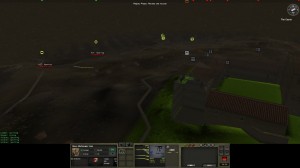
Pre-Dawn, and in light fog and rain, the Brits attempt to take Castle Hill. Fallschirmjägers open up as they break cover.
Not only do we see new forces, but the timeline in the Italian theatre has been extended from basically the month of July 1943 to a full year ending in June 1944. So what have Battlefront done to reflect this and the changes this would have? The developers have given thought to this and have added dynamic season appropriate weather, based on the date of the scenario. This impacts on how the terrain looks – snow, autumnal trees, as well as more game engine related stuff – spotting, movement etc. The hot, dry Sicilian battlefield gives way to a wet muddy Anzio, or an icy, snowy mountaintop at Monte Cassino. At times it seems hard to think you’re playing the same game, the scenarios can feel so different. It’s a nice feature.
As time went on during the Italian campaign the various combatants restructured their combat formation organisation in the light of combat experience. To reflect the historical changes, Battlefront have researched and implemented date appropriate changes to organisation and equipment of all the forces engaged during July 1943 to June 1944. This is a substantial piece of research, and a really neat Groggy feature giving time appropriate variations of unit organisations and weaponry available within a national force based on the scenario date – and you get season appropriate depiction of the terrain, which adds to the immersion!
For gamers used to the popular Normandy based World War II tactical battles but unfamiliar with the differences of European topography, they might be in for a surprise. Gone are the hedgerows, but in their place are olive groves, vineyards, and solid stone walls. The terrain in the Italian theatre is quite unlike that in Normandy, and ranges from rocky mountainous terrain, dense hilltop towns, to large fairly open areas with relatively little cover. Battlefront has really paid attention to this. In some respects the fighting, as at Anzio can be reminiscent of the fighting in the First World War, and at other times quite fluid. Unlike the Great War the forces had more modern weapons.
Speaking of weapons… Fortress Italy Gustav Line adds a lot more to the Fortress Italy mix. Both sides now have antiaircraft weapons and these include both towed and vehicle mounted versions. All in all Fortress Italy Gustav Line specifically adds
- 15 new small arms types ranging from the Gewehr 43 rifle to the M1 Garand w/ M7 grenade launcher.
- 16 new heavy weapon types ranging from the LG 40 75mm recoilless gun to the M1A1 Pack Howitzer.
- 10 new US vehicles and variations thereof ranging from the speedy M8 Greyhound to the M8A1 HMC.
- 10 new German vehicles and variations thereof including the more exotic Brummbär and Elefant.
- 34 Commonwealth vehicles and variations thereof ranging from the tough Churchill IV to the agile Daimler. Dingo Scout Car
- 1 new fortification type, the German Panther Turret Bunker – how cool is that?
Fortress Italy Gustav Line adds 17 stock scenarios to the Fortress Italy scenario bank, all with the Germans on one side facing US forces in 8 scenarios, British in 6 scenarios, Canadians in 2 scenarios, and New Zealanders in 1 small scenario. The Poles don’t get any stand-alone scenario at all. Poor old Poles… As far as I could tell, about 8 of the scenarios were historically researched, with the rest being fictional. I had played several samples across the range of scenarios at the time of writing this review, and found them all good. Each provided a variety of interesting situations and tactical challenge. I enjoyed playing them.
I was tempted to be critical of the single small New Zealand scenario because that nation was heavily engaged particularly during the Cassino battles, and I suppose I expected more than one scenario for that nation. That said, the scenario Kiwi Soldiers is actually very good indeed, being well thought out and without spoiling it too much – particularly lethal, given the kill zones that they have to contend with. I ended up playing the scenario several times before I got a win against the AI, which is a good measure of scenario design. Another great scenario, whilst fictional, was Venafro: Back into Hell, which is essentially urban combat in a heavily bombed town (a bit like Cassino), and is a real challenge with close range fire-fights and house-clearing being the norm. Conversely, it’s a very different experience to play the Canadians in the scenario, Lost, which is about the Canadians defending against a Panzer Grenadier counterattack in the Sicilian hills following an ambush. The point of all this description is really to indicate the diversity of the scenarios, and the different tactical issues before the player.
Fortress Italy Gustav Line adds four new Campaigns to the Fortress Italy campaign bank. There is
- German (Luftwaffe) – Foiling Fustian – stopping the British at Primosole Bridge (4 Missions).
- Poles – Monte Cassino – the final assault to push out the Fallschirmjägers (5 missions).
- American – Raging Buffalo – a “what if” campaign for the 1st Armored Division in an Anzio Breakout (4 missions).
- German (Heer) – The Corridor – 16th Panzer at Salerno (4 missions).
I had a go at the German campaigns and they are both fun. Foiling Fustian was quite a challenge to keep the Brits at bay, and involved both day and night fighting missions. The Corridor was a very different experience, with lots of tanks and Panzer Grenadiers fighting over relatively open – “Tank” – country.
What’s not to like? Well very little actually.
Historically, despite “disarmament” in September, reorganised regular Italian forces were fighting the Germans alongside other Allied troops at the battle of San Pietro Infine in December 1943. They expanded their forces and continued to fight for the Allies until the end of the war. On the German side, close on 100,000 Italian Fascists immediately went over to the Axis, with another 100,000 joining to avoid being sent to labour camps. These fought in what later were the Four Divisions of the Republic of Salo forces, or as Italian “Freiwillige” Waffen SS at Anzio (still equipped as per Italian troops were before), as indeed was a battalion of Italian “Nembo” Division paratroopers who fought at Anzio attached to 4th Fallschirmjäger.
I was a little disappointed to see that Italian forces had been greyed out as quick battle options from October 1943 onwards. It’s a pity since Battlefront have already worked on the formations and their TOEs remain valid until after the Battle of Filottrano in July 1944 for the co-belligerent Italians, and even later for the Republic of Salo Italians -both of which fall outside the Gustav Line timescale. The co-belligerents by then were reorganised and equipped as British/Commonwealth troops. In late 1944 the Fascist Italians were reorganised and equipped as per the German Heer.
If I’m to be really picky, I also noticed that the models for the New Zealander infantry wear the Divisional badge of the 49th British Division (the Polar Bears), which – save for the 9th Durham Light Infantry (which served in Sicily) – was a British unit that served in Normandy and beyond, but not in Italy. The 2nd New Zealand Division should have a white fern on a black background instead.
It would be nice to see the Italians allowed back into the Quick Battle system post September 1943, together with the New Zealanders to have their historical badge in a hotfix. I imagine it would not be too difficult to do, given that much of the work is already done for the Italians.
However, my criticism is broadly insignificant. The Gustav Line module delivers a truly excellent expansion for Fortress Italy. I’m mostly left as Dicken’s Oliver Twist saying “Please Sir. Can I have some more?“
Well, what more did you want? I ask myself.
I’d have liked to see more scenarios for the Commonwealth, particularly the Poles who got zilch (but then, technically they weren’t Commonwealth troops!), the Canadians, and not least the Kiwi’s. I’d have liked to see a British campaign – representing Crossing the Dittaino with the fight for the Gerbini Airfields, or the fight for the “Factory” at Aprilia in the Anzio battle – all of which has a fair bit of historical information available. For the Canadian’s I’d have liked to have seen an Ortona Campaign and a Kiwi Campaign based around the fight for Cassino Town. In the meantime I’ll console myself with the Quick Battle generator, which gives a lot of flexibility to play the different forces under a variety of conditions.
Although not “new” to Fortress Italy Gustav Line, the game editor introduced in the core Fortress Italy game deserves mention. It’s early version first saw light of day in Combat Mission Beyond Normandy, but is now a much more intuitive and elegant tool. It allows gamers to design scenarios, campaigns etc relatively easily, and whilst I hope that Battlefront will revisit this scenario/campaign wish-list in a future ”Fortress Italy Gothic Line” module, the editor provides an opportunity to fill the gap. Rather luckily, there is a full Ortona map kindly reproduced by a designer over at Battlefront’s Repository, so hopefully someone will take this further….
On the matter of remaining wishlist, I’d have liked to have seen the presence of the Indian and the French Army, together with the presence of Italian partisans, and the British Royal Marine Commando’s in the module. By extension could give rise to raids and partisan battle scenarios set in Italy as well as Yugoslavia. This is all very nice for a wish-list, but to be fair to Battlefront, given the work that has already gone into Fortress Italy Gustav Line it probably is expecting too much for a small developer to do in just one module. Perhaps in a future one?
Regarding the evolution of the game engine I‘d have liked to see the issue of fire: flamethrowers, persistent smoke, bailout, and recrewing for gun crews similar to that offered with vehicles, and tank passengers. It would also be nice to have an autosave option in the game interface, which was a feature of the original Combat Mission.
Of course, this is all wish-list issue, and frankly doesn’t really detract from the wargaming goodness on offer with Fortress Italy Gustav Line.
The Combat Mission series remain some of my favourite games, and I’d say Fortress Italy Gustav Line is an essential “must have” for any Grog who has bought or plans to buy Fortress Italy.
Grumpy Grog Says: (In a “Husky” voice) “What the “Dickens”! Fortress Italy Gustav Line is an “Avalanche” hitting the “Shingle” of my Wargaming world.”
Share your feedback about this review in our forums!
Further Reading
Non-Fiction
Fiction/Memoirs


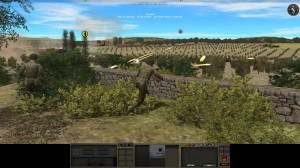
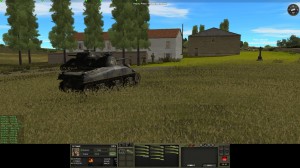
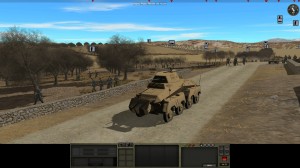
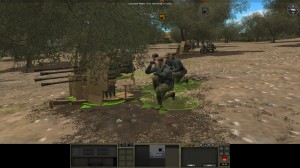

Fortress Italy offers version 2 cmx2 engine . No revolution in sight, but some nice touches adjustments (interface, fine graphics), which allow to find, surprisingly enough, already existing in the former CM features.